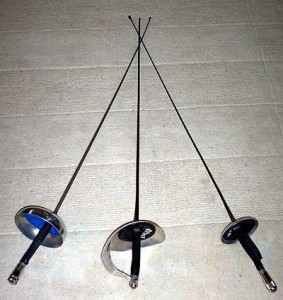On display at the London Olympics, the competitive sport of fencing is based on three disciplines each with its own steel weapon size and style.

Those of us in the metal business are familiar with many of the different grades of steel that have been developed and improved over the decades. When it comes to the world of fencing, however, only one type of steel is preferred: maraging steel, a high strength alloy perfect for this application. If a crack occurs in a blade, it propagates ten times slower than a crack in carbon steel.
Although the blades used in fencing have been developed using materials other than steel like carbon-fiber composites, the athletes themselves prefer the weight and feel of steel swords.
The three disciplines of fencing are sabre, foil and epee with lengths of 34.6in, 35.6in and 35.4in respectfully. The first two weigh 1.1lbs; the last 1.7lbs. The saber is employed in sticking and slashing motions that target the opponent’s upper body. Points are scored with the foil by targeting only small areas while using a weapon with a pistol type grip. The epee has a stiff triangular blade for stabbing the opponent anywhere on the body.
Besides being good for swords, maraging steels are useful as shafts, as a substitute for long, thin parts and as components subject to impact fatigue, such as print hammers or clutches.
At the other end of the spectrum are the specialty steels used to make the bar that holds the barbells in Olympic weight lifting events. On August 7, Behdad Salimikordasiabi from Iran won gold in London to confirm his title as the “strongest lifter in the world.” He lifted 459lbs in the snatch and 545lbs in the clean and jerk.
The bar he lifted is designed to withstand 1-1/2 tons without breaking or losing its shape. With this capacity, the Swedish-made steel has a safety factor of four, i.e. 1-1/2 tons is four times heavier that the heaviest lifts in the competition. Although you will see the bar bend, it has a built-in elasticity that allows it to spring back into shape after each lift.
The plates on the ends of the bars are made of steel coated with rubber. Not only is the nature of the steel in weightlifting important, but also the rubber coating on the barbells. If the rubber coating is too soft, the barbells might bounce uncontrollably when dropped to the floor; if too hard, they might damage the platform.







